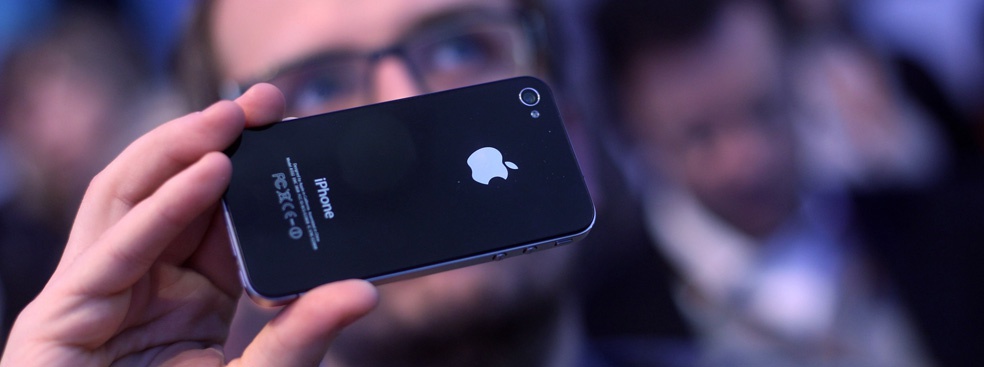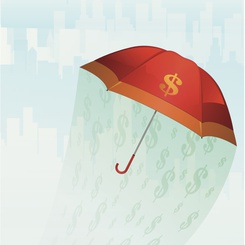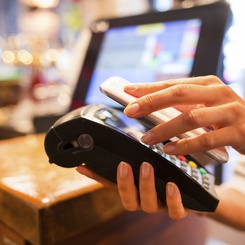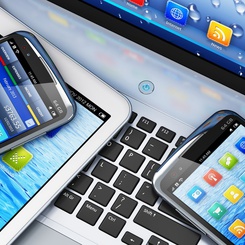Reactions following the release of the iPhone 5 have been twofold: while the device is still arguably at the top of its game in terms of design, components and the strength of the Apple ecosystem, many have been quick to point out the increasing routine-ness and incremental nature of Apple’s mobile innovation announcements.
“It’s clear that the iPhone 5 is a typical incremental innovation,” says Jan Ondrus. “Yes, the new iPhone 5 is lighter, it has a bigger screen. But this launch was more about Apple’s timely obligation to bring out a new iPhone than it was about announcing anything truly innovative.”
Sales figures will be telling in this regard as buyers of the iPhone 5 are more likely to be individuals upgrading from older versions than people buying into the Apple ecosystem for the first time. As Professor Ondrus explains, “this is a routine type of upgrade and there probably aren’t many people hesitating between the Samsung Galaxy S3 with the Android ecosystem and Apple’s iPhone 5 and then deciding to go with the iPhone 5 because it has the best features.”
While many companies are taking similar approaches – the bigger screen, the lighter design – features are a strategic choice for those key players in the Smartphone game. “For Sony, Samsung and LG for example, it’s not a question of ability, it’s a question of knowing what they want to do with the market, how they want to position their product. Plus, if they all made their Smartphones out of metal and glass like the iPhone, focusing on that same upscale market, it wouldn’t be sustainable to say the least.”
Considering the similarities, one might even ask: is there still innovation in the Smartphone industry? Beyond design changes, does anything really new lay ahead in the near future?
The Implications of Apple’s Big Omission: Near Field Communication
NFC technology is one way that Apple’s competitors are setting themselves apart. And while NFC is nothing new – NFC and related RFID is the same technology used by retail alarm tags for the past two decades – it’s starting to be put to innovative use in terms of mobile business.
“NFC will allow Smartphones to communicate with things around them in real world interactions,” explains professor Ondrus. “This is more than just sharing data like documents and photos between devices, it will allow Smartphones to store any chip information from a credit card, subway pass etc. You wouldn’t need to carry these items with you anymore, all information would be stored in your phone.”
Understandably, some experts had predicted the iPhone 5 would include NFC capabilities that would tie in with the already existing “EasyPay” technology that allows Apple Store customers to pay for products using their iTunes account. The omission has therefore been the source of a certain amount of disappointment. “
The addition of NFC could have made the iPhone 5 launch really exciting,” says Professor Ondrus. “We could have expected Apple to announce a partnership with a group of international businesses to accept payment by iPhone. But this wasn’t the case.”
Indeed, the Apple “cool factor” advantage is primarily based on experience – Apple always promises its users the best possible experience with their product. And admittedly, the NFC experience would have been lacking without an extensive list of international business partners signed on to accept iPhone payments. Apple didn’t want their customers to say ‘OK, I have this mobile payment capability but now where do I use it?’
Plus, do people really have the need to use mobile payment at retail stores? If you’re carrying a phone, why not carry a wallet as well? As professor Ondrus puts it, “in many ways NFC is a solution still looking for a problem.” But by leaving NFC to be developed by the competition, is Apple shooting itself in the foot in the long term?
The Apple Business Model: a Setback in the Future Mobile Business Race?
While Apple holds off on NFC, its competitors are working to develop the technology. The Google Wallet app, available on Android, already lets users store their major credit cards, debit cards and loyalty cards for use on phones or computers. As Professor Ondrus explains, “NFC is already pushed by Android on all the mid to high-end phones recently launched on the market. In markets like South Korea for example, all the Samsung smartphones are NFC enabled with a pre-installed wallet application provided by the mobile network operators .”
But while this technology isn’t easy to use everywhere, conditions are set to improve: “A recent Wired article, for example, talks about someone who is trying to live one month in San Francisco with only a Samsung Galaxy Nexus using Google Wallet, Paypal and other electronic and mobile payment, but no credit cards, no cash,” he adds. “Suffice it to say that it isn’t easy right now. That said, there are over200,000 points of acceptance in the US right now andthis number is set to increase.”
However, when it comes to convincing companies to sign on to accept mobile payments, Google is at an advantage. Google is able to leverage the vast amount of data at its disposal to create additional benefits for companies accepting this technology. “Google Wallet takes 0% commission. In fact, Google isn’t really interested in the payment itself, but more in the services around – couponing and customized advertising,” he explains. “Once they know what you bought and where you paid, they can offer businesses targeted marketing and coupons on the fly because everything is digital. If a customer walks past a store participating in Google Wallet, they could get a push directly on their mobile letting them know about the latest promotion. This is Google’s ultimate goal for this technology.”
“The problem with Apple,” he goes on to explain, “is that everyone is afraid that once you get into the Apple ecosystem, in most cases, you get squeezed for a 30% commission for everything that you do. This gives content producers very little profit margin. Plus, if you agree to pay the 30% in the context of a mobile payment scheme, it doesn’t really bring you new business. It has to be very carefully tweaked by Apple to become really attractive to businesses.”
“In order to be profitable, companies producing Apps have to ensure big numbers so it can get very difficult for people to survive in this ecosystem. So far the numbers are still increasing so it’s not an issue yet, but it may be one that will come up.”
The Apple Cool Factor: Setting itself up to Stumble
The “cool factor” of the Apple ecosystem – the seamless integration between hardware, applications and devices – is vital to the company’s success. If the public begins to see Apple products as less attractive, people will stop buying into their ecosystem, the company will loose market share and content producers, hard pressed to make a profit, will look to other ecosystems.
“Nowadays,” explains Professor Ondrus, “everything is about the competition between the ecosystems – you’re a Google person or an Apple person and you buy your devices accordingly to allow for a better user-experience.”
And while Apple benefits from a relatively large market share in the US – about 1/3 of the market – it has very little market share in other countries. In Korea, for example, Android has the upper hand in a big way. And globally speaking, Android has a bigger market share than Apple.
The ecosystem is Apple’s big strength – allowing users to share data between devices, hold their iTunes library on their phone etc. But now Samsung is positioning itself to be a real competitor. You can share data seamlessly between the Samsung Galaxy Tab and smartphones, in much the same way as the iPhone and iPad. Yes, Apple was the first to develop tablet technology but they will need stay sharp to maintain competitiveness.
“There is buzz around the iPhone 5 launch, but this is pretty standard now,” adds Professor Ondrus. “But if Apple keeps announcing incremental innovations, the buzz will be less systematic. In addition, the keynote address lost a bit of its momentum as Tim Cook is no Steve Jobs. […] in some ways I feel the magic is gone.”
Will this play out like the long battle between Microsoft Windows and Apple Mac OS? Professor Ondrus underlines the fact that Mac OS still represents a minority today: “The question is really the same in the mobile ecosystem war. Apple’s ecosystem is still a closed one while Android is more open as it runs on Samsung, LG and various other brands. How long before Apple starts losing market share when its iOS devices get less attractive? If the iOS ecosystem does shrink, it could shrink to a point where content producers and other service providers will be able put more pressure on Apple.”
Further readings:
Jan Ondrus & Kalle Lyytinen, “Mobile Payments Market: Towards Another Clash of the Titans?”, In: Proceedings of the 10th International Conference on Mobile Business (ICMB), Como, Italy, June 20-21. 2011.
"Mobile Application Market: A Developer's Perspective" (A. Holzer, J. Ondrus), Telematics and Informatics, Feb 2011, Vol. 28, Issue 1, p. 22‑31
"Near field communication: an assessment for future payment systems" (J. Ondrus, Y. Pigneur), Information Systems and e-Business Management, Jun 2009, Vol. 7, Issue 3, p. 347‑361









